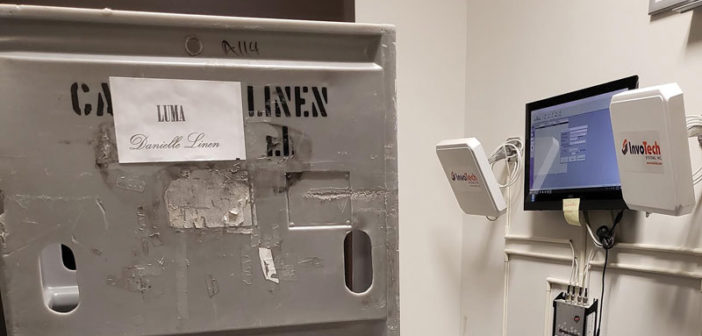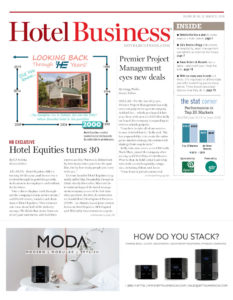NATIONAL REPORT—With hotels often spending thousands of dollars on bedding and linens, preventing the loss of those items when they are laundered in outside facilities can be a major cost saver.
Stanford Hotels is now using an RFID tracking system from InvoTech Systems to keep tabs on which items leave the hotel and which are returned. Stanford uses the solution at the Hilton Washington DC National Mall and the Luma Hotel Times Square in New York City, which both use outside laundry vendors.
“Properties—especially newly opened ones like these—spend a huge amount of money on the linen inventory for the rooms,” said Harvey Welles, CEO/president, InvoTech Systems. “The rooms have sheets, pillowcases, towels. When they are at 100% occupancy, they need to wash everything every day. They need to stock them, and they need to know where they are at all times.”
The system uses ultra-high frequency (UHF) radio frequency identification (RFID) technology to track the items. Each item has an RFID tag that is scanned when the items are about to leave the property and again upon their return. “What UHF does is allow us to read large quantities of items in no time,” said Welles. “In seconds, we can read 500 items. We can not only count, but also sort. We will know how many towels, sheets and pillowcases are in a cart, for instance, so we can tell the laundry that we are sending 500 items. We can print the report and tell them that 250 are towels and 250 are sheets.”
The system eliminates the need for an employee to count and sort through the items. They are automatically scanned by the RFID chip, which broadcasts the UHD signal.
“With our system, all of that labor is eliminated because they don’t need that person to do it,” he said. “We put them in the bin, we count them, we read them, we print a report and we put it on the screen. A lot of that labor is eliminated. That person can be re-tasked to do something else. That is why we say we eliminate 50% of the manual tasks.”
The procedure is the same when products return.
This tracking keeps the outside laundry vendors accountable for any unreturned items. “It is very difficult when you are running a hotel and you are receiving these things from the laundry; there is no time for someone to really check everything one by one,” said Welles. “When the laundry doesn’t send items back, it means that they got sent to a different property or they got lost in the laundry; the properties never get them back. We basically hold the laundry accountable for the items that we know are ours.”
Keeping the outside laundry vendors accountable was a main reason why Stanford Hotels chose to use the system. “The whole idea started because about a year ago we opened Luma in New York,” said Munish Sarup, applications system analyst for the hotel company. “In that hotel, we purchased some very expensive, top-of-the-line linens. Obviously, being in Times Square, we do not have real estate to have our own laundry system like other hotels, so we were sending it out. They are dealing with a lot of hotels and other places that may have the same white-colored sheets, but not as expensive as what we have, and we don’t want them to get mixed up.”
Another advantage that Sarup has found with the system is that it tracks how many times an item has been laundered. “We will know that an item has been washed 250 times,” he said. “We know that it is the end of life for it. We know when it is time to reorder.”
Welles said that the RFID tags last longer than the linens do. In most cases, the tags are added to the items when they are first produced by the linen manufacturers.
“The tags are sent directly to the manufacturer,” he explained. “We send them to the manufacturer with instructions on how and where to put those into different items. The manufacturers receive them and during the manufacturing process, they put them in the items. When they are delivered to the property in boxes, they are already tagged, so we put them in the inventory as we receive them, and it is very quick.”
For properties that have existing linens, the company sends the tags pre-pouched to the hotels. “The pre-pouched tags can be provided to those properties that already have the linens; then, either the hotel or the laundries would sew those tags to the different linens,” he said. “Usually when they are implementing the system, it is because they are buying a large quantity of linens.” HB


